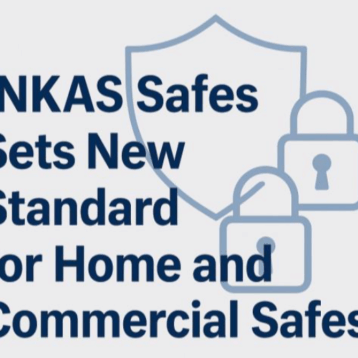
Enterprise security is a multifaceted part of today’s reality: on the one hand, it’s a huge need due to an ever-growing presence of threats; on the other hand, it can be a huge undertaking, with issues of its own thanks to its complexity. Enterprise security doesn’t constitute a single approach or a single need, but a variety of needs that exist for those who are already embracing the future of business. Some of these needs are ones that require answers today, while some answers have had to evolve with the businesses they protect.
Enterprise Security Needs
One of the biggest needs in enterprise security is the assurance that while your business grows, your business’s new, sometimes growing weaknesses are addressed in the interim. Apart from that, there are also specifics, like the fact that sensitive information needs to be kept from becoming compromised, even in the event of a security breach. There are other needs, too, that every enterprise security endeavor has to consider: ever-changing regulations on the web allowing for unprecedented risks, the need to educate employees for the optimal security protocol, and the need for strategies that account for the chance that someone might fail at protecting your assets. But with all these needs, how can there be a way to address them? That’s where XDR security comes in to offer significant industry improvements. It meets the needs we all have.
Built-In Responses
Whether or not there’s a strong element of manual cybersecurity practices, every enterprise security strategy requires automation to a great extent. From the way that breaches are detected to the identification of new threats, there’s a need for built-in responses into your chosen XDR service. That’s why it’s best to have a cybersecurity platform that can act on its own when you need it most. XDR (Extended Detection and Response) is a type of cybersecurity tool that reacts aptly to a variety of situations, including threats, thanks to the presets you define. You can take on the bulk of the work yourself, coding responses that are made to address each new specific threat, or you can trust an XDR platform, which is designed to take that responsibility head-on.
Consider the idea of having a threat that has made it past your initial defenses. While the idea isn’t appealing, it does happen: so XDR’s built-in responses are meant to even act as a fail-safe in case of such a breach. In case of this, responses can encrypt sensitive data, secure further breaches, and even isolate and purge the specific node to which a breach has been made. Never will you feel safer, than when XDR takes on a potential threat (or a real one) and performs an automatic fix to the situation.
Holistic, Simple Security
There’s something to be said about advanced tools like those in cybersecurity, which can take on the brunt of a problem for you. But oftentimes, advanced tools can be a pain for operation, a pain for understanding, and even a pain to keep in tip-top shape. However, XDR is advanced beyond even that stage of helpfulness. Although it’s a powerful solution suite designed to eliminate cyber threats, it’s still far easier to understand at a glance. Rather than needing a dedicated person to read and understand threat reports and the like with a traditional cybersecurity platform, XDR platforms offer a simple and holistic approach to reporting and conveying the necessary next steps. No longer need your code, decipher, or otherwise invest unnecessary time in the minutiae of cybersecurity; instead, you can see the highlights, the big picture, and be alerted when something specific needs attention. Because the goal is reduced complexity, your XDR platform will include integrations from various tools and detection systems that work together, rather than requiring you to check on multiple dashboards to assess any given situation.
There’s an added boon to such simplicity: your team will know and understand the tool, too. You don’t need to have a team that’s unable to perform the proper protocols to keep your network safe, so with XDR, your team will know what’s required of them and when, each time they interact with the network.
Active Threat Discovery
You have set up your defenses, and you’re ready for what identified risks may come your way — but what about the unidentified risks? Your enterprise is valuable, and cyber attackers know that. It’s why they’re always adapting, looking for new ways to step in and take what they can. But the threats aren’t the only thing adapting. XDR is designed to identify correlations in data, root out possible malicious behaviors in a system, and index these new threats to stay one step ahead. Additionally, XDR solutions understand the concept of blind spots — the places where your cybersecurity is weak or unable to identify risk. This means that while attackers look for the unseen vulnerabilities, your security does too. XDR analyzes and responds to these just like a threat, finding automatic, in-depth fixes that can be identified later for your report.
Conclusion
Enterprise security has a lot of needs, and many of these keep people scratching their heads in search of what can help them avoid the many existing cyber risks out there. But with an XDR security solution on the table, much of these needs get met, and the overall approach to enterprise security can be improved.










